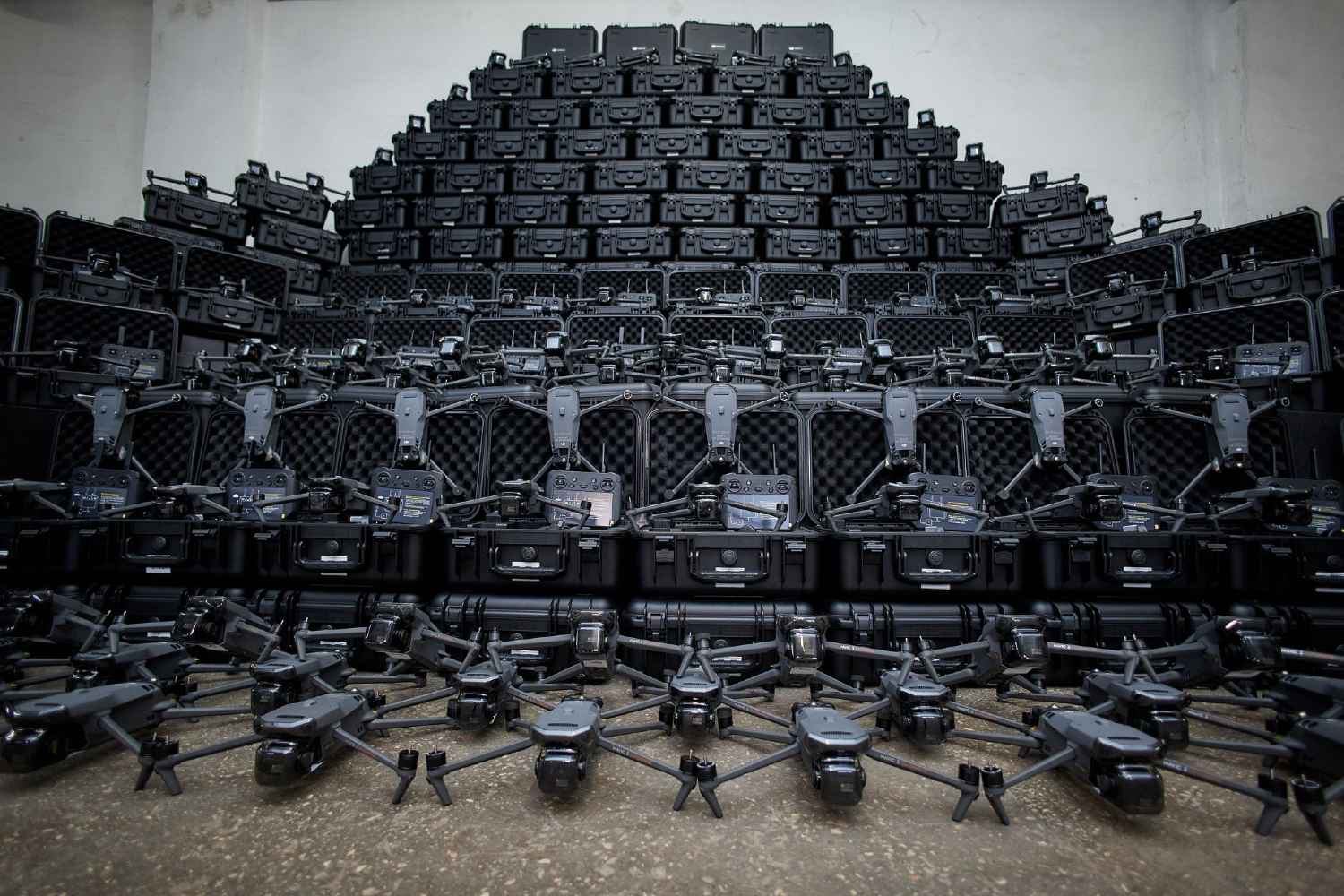According to the Wall Street Journal (WSJ), US-made drones have failed to live up to expectations in the Ukrainian conflict, prompting authorities in Kyiv to reassess their options and turn towards Chinese alternatives for defense needs.
According to WSJ, most small unmanned aerial vehicles (UAVs) developed by American firms have struggled to perform in combat scenarios.
This development blows the hopes of these companies, who anticipated that combat testing would bolster sales and attention for their products. Moreover, it poses challenges for the Pentagon, which requires a reliable supply of thousands of small drones for various purposes.
Sources cited in the report, including drone company executives, Ukrainian frontline personnel, government officials, and former US military officials, outline several key issues plaguing US-made drones. These include exorbitant costs, technical faults, and complex repair processes.
In particular, Ukrainian officials have found US-made drones to be fragile and ineffective against Russian jamming and GPS blackout technology. Instances have been reported where these drones failed to take off, complete missions, or return safely. Moreover, they often fall short of advertised flight distances and payload capacities.
One prominent example cited in the report is the Silicon Valley-based company Skydio. Despite dispatching hundreds of its most advanced UAVs to assist Ukrainian forces, the technology proved inadequate.
Skydio’s drones frequently veered off course and were lost due to Russian electronic warfare systems, prompting the company to embark on developing a new fleet.
In addition to Skydio, another US defense contractor, AeroVironment, which secured a Pentagon contract to supply Switchblade 300 drones shortly after Russia’s expanded invasion of Ukraine in 2022, encountered similar issues.
In the initial stages, US-made Switchblade drones encountered hurdles due to Russia’s advanced electronic warfare capabilities. However, AeroVironment has since undertaken significant efforts to enhance the drones, implementing updates and modifications to counter these challenges effectively.
Several US drone company executives admit they did not anticipate the level of electronic warfare encountered in Ukraine. For example, Skydio’s drone, designed in 2019 to meet US military communication standards, struggled with sophisticated jamming techniques.
Startup executives also cite US restrictions on drone parts and testing as limiting factors in their ability to innovate and respond quickly to evolving threats. In a conflict where daily updates and upgrades are essential, these restrictions have proven to be a significant hindrance.
Chinese Drones Are Cheaper And Reliable
In response to the shortcomings of US-made drones, Ukrainian authorities are reportedly turning towards cheaper Chinese products to supplement its drone arsenal.
The Ukrainian military, which reportedly spends about 10,000 UAVs a month, finds it financially challenging to procure expensive US-made drones. Many commercial UAVs from the US cost tens of thousands of dollars more than their Chinese counterparts, making them less feasible for Ukraine’s budget.
US-made drones tend to be costly due to stringent requirements imposed by the US Defense Department on drone manufacturers. These regulations, including prohibiting the use of Chinese components, have increased the expense and complexity of constructing small drones.
Meanwhile, Chinese drone manufacturer DJI has emerged as a preferred brand for the Ukrainian military. Ukrainian Prime Minister Denys Shmyhal acknowledged last year that the country heavily depends on Chinese DJI drones for defense purposes.
Speaking at the Kyiv International Economic Forum, Shmyhal disclosed that Ukraine effectively purchases 60% of DJI’s global output of Mavic quadcopter drones despite the vendor’s official prohibition on selling to militaries.
This reliance on commercial technology with military applications underscores the challenges of controlling the flow of such products into conflict zones.
In response to inquiries, DJI stated that while it strives to limit the use of its UAVs in conflicts, it cannot control their utilization after purchase. The company emphasized its disapproval and condemnation of any misuse of its products to cause harm anywhere in the world.

Despite restrictions, Ukraine has managed to acquire tens of thousands of Chinese-made drones and spare parts.
Last year, the New York Times, based on official Ukrainian customs data from a third-party provider, indicated that between January 2023 and June 2023, Kyiv received “millions” of Chinese drones and spare parts, primarily facilitated through European intermediaries.
Furthermore, Ukraine has cultivated a domestic drone industry that heavily relies on Chinese components. Ukrainian factories churn out hundreds of thousands of small, inexpensive UAVs capable of carrying explosives.
Additionally, the country produces larger drones capable of penetrating deep into Russian territory and reaching Russian warships in the Black Sea.
- Contact the author at ashishmichel(at)gmail.com
- Follow EurAsian Times on Google News




